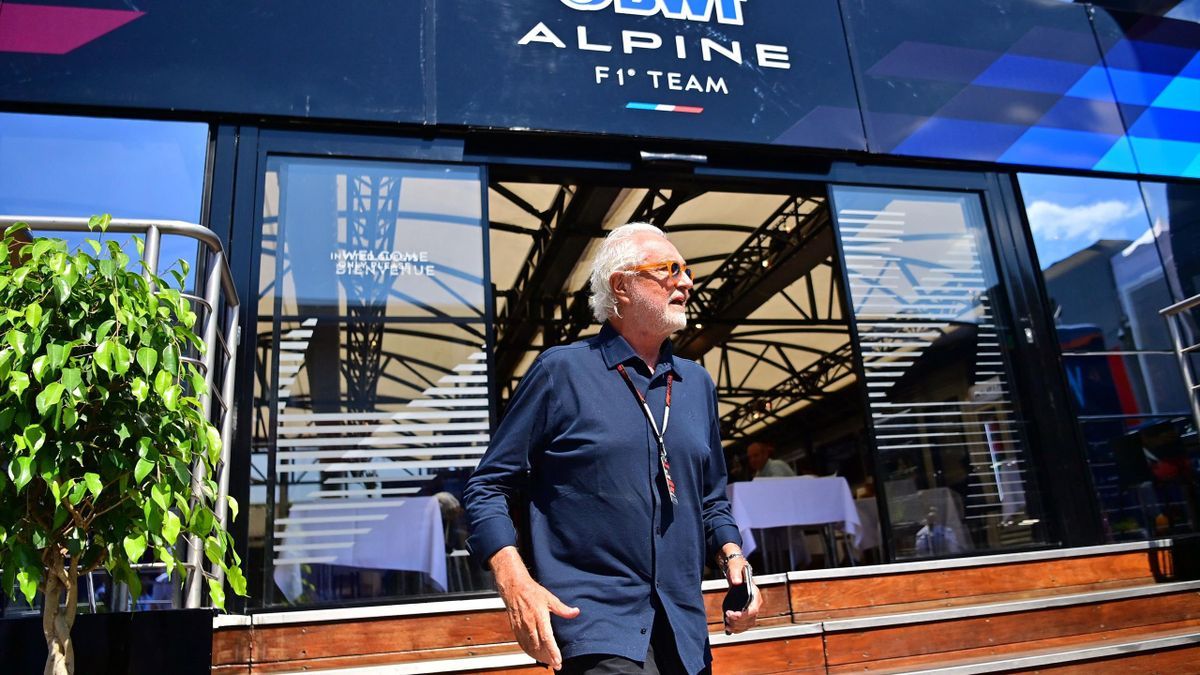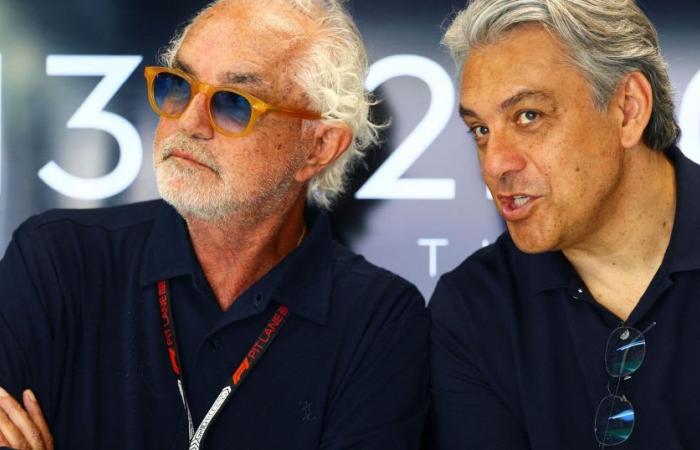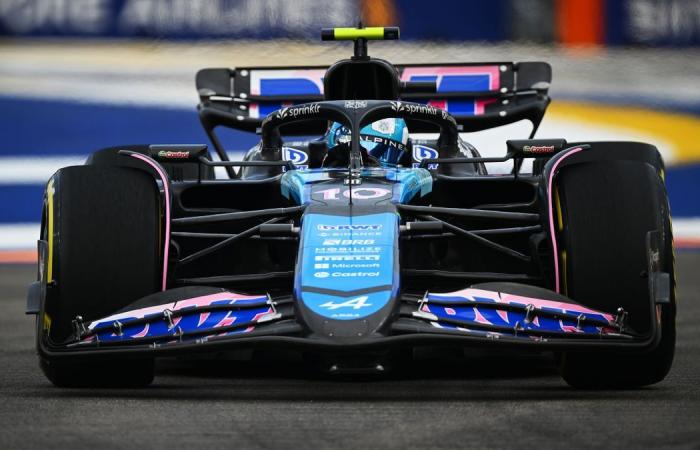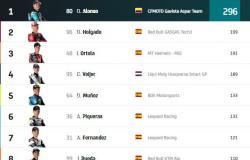he disappointment is immense, commensurate with the disbelief which has gripped the Renault F1 site at Viry-Châtillon – and a large majority of sport observers – since the abandonment made official on Monday of the project to race with an in-house V6 from from 2026; to probably prefer a customer Mercedes. But as since the start of this umpteenth affair which is shaking Alpine F1, between technological renunciation, residual savings and human waste, the employees of the southern Parisian site remain mobilized and constructive in their objections to Luca de Meo, the CEO of the French group who made this decision to break up. Because they deploy admissible arguments, because they chart a future in the face of the adventure of this short-termism which reflects an emergency, even a panic. Which mistreats the glorious history of this factory and its DNA.
Louis, an engineer in Viry whose first name we have changed to respect his anonymity, explained to us how Renault, Alpine’s parent company, got there. To sacrifice his engine, the ultimate expression of technological mastery in Formula 1, a marker of his commitment since 1977. And why, above all. “Monday’s announcement is a little more impactful than what we have heard so far. It hurts, that’s clear. There have been years of work behind it,” confides he preambles, before coming to the point “We spent ten years trying to make up for the delay we had from the start, during the regulatory change,” he concedes, regarding the failed shift of the V6 turbo. hybrid in 2014.
“We are in the process of dismantling Alpine”
Enstone gearbox, real problem
In terms of power and reliability, the French powertrain was not born well and has paid for it over time. And the freeze on development from 2022 – in urgent response to the post-Covid crisis – dealt the final blow to its developers. While we have spoken of a deficit of around 30 horsepower during 2023, the delay compared to the Honda, Ferrari and Mercedes references is much less in reality. “There are 7 kilowatts or 10 horsepower, which is not much, attributable to the engine as such, or at least to the part developed by Viry-Châtillon, concedes Louis. It has a deficit which does not only contributes 15% of the total and we are unable to continue our development which has been bearing fruit since 2022. The rest, in fact, is partly justified by poor performance of the gearbox, which is the responsibility of Enstone.”
Luca de Meo therefore blames the V6 today for this observation, and would kill two birds with one stone by buying a complete rear axle from Mercedes. In fact, the Etoile firm markets the transmission that goes with it. Not a real option according to Louis, who recalls that “for the majority of people in the industry, you cannot hope to be world champion by purchasing an external engine supply.” The History of F1 has actually only known one exception to home-made, outside the Cosworth V8 period: Brawn with the Mercedes, in 2009.
Pierre Gasly (Alpine)
Credit: Getty Images
“A disavowal”
Obviously, Flavio Briatore, Luca de Meo’s executive advisor and who came to “clean up” Alpine F1 as he said, without ever coming to Viry, is happy to point out that McLaren is world number 1 among manufacturers with a V6 Mercedes. But precisely, equipping yourself with the same engine as Mercedes, McLaren and Williams would mean depriving yourself of making a difference in the power unit. “Enstone’s performance deficit will perhaps be compensated thanks to the contribution of Mercedes, but whatever happens, it is a disavowal to hope to be champion without using the engine (of 2026)”, believes Louis.
Factually, the V6 is only part of the problem, and to be convinced of this you just need to see that Alpine has signed its best record since its return by finishing 4th in the Manufacturers’ World Cup in 2022. “Since then, we have not “no longer has the possibility of developing the engine and our results are in free fall”, notes our interlocutor in Viry. All the blocks in the paddock were frozen, so it was at the level of chassis design that the team plunged, following changes in team bosses and technical directors.

Flavio Briatore (Alpine) at the 2024 Spanish Grand Prix
Credit: AFP
Economies, trade-off
Beyond this extraordinary technical heritage which risks being lost, despite the implementation of technological monitoring already deemed insufficient by Viry, it is the financial motive which shocks the employees. “Some of my colleagues met last Friday with Mr. De Meo, who ultimately spoke of savings, trade-offs, expenses linked to the power unit not justifying the performance gain in fine. We see that in the ambition to become champion, Audi, like Red Bull, invest colossal sums for their engines. For Audi it is a billion euros, whereas the Renault group tells us of 100 million savings. We do not have the same. ambitions in the face of that.”
Like Renault, champion in the mid-2000s, Audi develops a chassis and an engine in separate bases, even different countries (Germany and Switzerland), which suggests that this model, certainly more demanding, is still current in Formula 1. And that Flavio Briatore’s argument on the proximity of the Mercedes engine factory, in Brixworth, and the Alpine branch in Enstone, also in England, is that of ease.
Le dileme du “make or buy”
In short, there is no decisive reason not to believe in this future of a Renault V6 that is ultimately efficient, attractive for customer teams, and therefore capable of generating revenue. “This (V6) R26 is our opportunity to completely return to the game in 2026, pleads Louis. We expected a lot from that year and there is a deep disappointment, a great frustration at not having had the opportunity to let it speak the technique to decide our fate Despite strong instability in our management at Viry, our 2026 engine project has always been able to maintain its deployment line. It was able to arrive at the test bench on time and offer results that. were more than promising.”
Unfortunately, a new argument, made public recently, has further torpedoed the project: Viry would not be able to develop its V6 as well as Mercedes and Ferrari. “We have a development approach which is not that of Mercedes or Ferrari,” explains Louis, “in the sense that the “make or buy” strategy, Mercedes and Ferrari have chosen instead the “make” strategy. While Renault, historically, has always chosen “buy”. That is to say, we rely on a network of suppliers rather than trying to manufacture our concepts internally. can blame us, wrongly, for these stories of development when ultimately, our approach is to find the experts where they are.” In short, the customer engine option would also free management of many day-to-day complications.
Viry has nevertheless moved closer to Enstone
If Louis actually recognizes in Luca de Meo “the ambition to be champion”, at the cost of a “risky bet” and a line on a great story, he does not exclude a personal, political dimension in this decision . The Viry engineer recalls that the CEO will be at the end of his mandate in 2027, and that it is perhaps for this reason that he is today taking a shortcut in order to display in his balance sheet a renewed competitiveness of Alpine F1.
Despite these constraints, which are part of the challenge of F1, Viry is ready to continue to give guarantees to the Enstone base to do, again and again, tailor-made products. “Having two separate sites to handle the development of a team is not easy,” he recalls. “We had been working for two years to improve relationships, to integrate as soon as possible in the chassis developments, that we take their opinions into account in the construction of the PU (power Unit) integration issues. With the R26, we decided to completely review our innovation approach, to review the technology management strategy. breakup. We questioned all our prerequisites a little to really start from scratch.”
In the past, Renault has already found itself at a crossroads, getting lost with the V10 open at 110° at the beginning of the 2000s. Only to quickly start again on a new project, conventional in its architecture (a V10 at 90° °), which ultimately crowned the team world champions in 2005 and 2006.
The glorious elders remember well, and their testimonies, if they are not yet effective, will always be a precious support for these men and women of Viry ready to demonstrate that they have unique know-how in sport, that they represent a flagship of the French automobile industry. Who also hopes for support, a public position from state services in order to change the course of history. Because it’s never too late.








